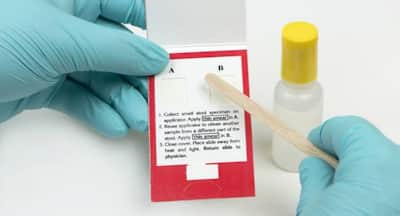Don’t Miss Out on the Latest Updates.
Subscribe to Our Newsletter Today!
How to read your medical test report: Stool test

All you need to know about reading your stool test report.
Feces or stool is the solid waste product of digestion. It varies in color, texture, amount, odor, etc. according to your dietary preferences and general health. If you thought it is only to be quickly flushed away, think again! Significant changes in its appearance and composition can provide valuable clues to your digestive problems. Hence, it can be used as an aid in providing useful information about your digestive health. It can be tested in the lab to analyze what s wrong with any part of your gut.
Stool test or stool analysis what is it?
A stool test or stool analysis is the collection and laboratory examination of stool. The test helps diagnose the presence or absence of a disease. For the test, a sample of your stool is collected in a clean container and sent to the laboratory for microscopic examination and other chemical and microbiological tests. During a stool culture, bacteria are grown in a culture media under controlled laboratory conditions. A fecal occult blood test checks for blood that is not visibly apparent in the stool. A gastrointestinal pathogen panel test for the gut infections causing viruses, bacteria, and parasites in your stool sample.
Also Read
When is the test recommended?
Stool analysis helps assess the overall health of your gut. It helps analyze microbial balance, food digestion, food absorption, etc. This test may be recommended in conditions like food poisoning, constipation, diarrhea, indigestion, malabsorption, lactose intolerance, IBS, IBD, parasitic infection, colon or stomach cancer, etc. Stool DNA tests might be able to accurately detect colorectal cancer [1].
A stool culture may be ordered if you have severe diarrhea, vomiting, abdominal cramps, dehydration, and electrolyte imbalance. It can help diagnose bacterial infection and identify the causative organism as well. Identifying the causative organism can guide in disease treatment and help limit its spread. A stool sample may also be used to detect viral and bacterial antigen with some enzyme immunoassays.
Reading your stool test report
Many conditions can affect your gut and produce abnormalities in your stool. Several gastrointestinal diseases can be diagnosed by analyzing the changes in the stool s color, consistency and pH, and the presence of mucus, bile, fat, sugars, blood, white blood cells, etc. Evaluation of certain enzymes in the stool can help determine how well your pancreas is functioning.
1. Color
Bile and bilirubin in the digestive waste give the stool its characteristic color. If food passes through the intestine relatively quickly, the bile is not properly digested and broken down to provide the normal light to dark brownish color.
Normal:
Light to dark brown
Abnormal:
Yellow - food passing through the gut relatively quickly, malabsorption of fat, certain infections, GERD, cholecystitis, gallstones, etc. Yellow stool persisting for several days and accompanied by other symptoms may indicate liver disorders.
Green - a diet rich in green vegetables, green food coloring, diarrhea, bacterial or parasitic infection, etc.
Black - iron supplements, bleeding in the upper gut, etc.
Violet/purple porphyria
2. pH
The normal stool pH reference range is 6.5 to 7.5.
< 5.5 pH (acidic) - poor absorption of carbohydrates or fat, lactose malabsorption, etc.
> 7.5 (alkaline) colon inflammation, colon cancer, antibiotic use, etc.
3. Blood, fat, enzymes and reducing sugars in stool
Conditions like damage to intestines, ulcerative colitis, a tear in the rectum, hemorrhoids, anal fissures, colon cancer, etc. can cause blood in stool. Inflammation of the intestines or a bacterial infection can cause the presence of white blood cells in the stool. The presence of occult blood in stool indicates blood loss in the gut. Further investigations can help diagnose the reason for the bleeding.
Normally, the stool contains no fat. Some digestive disorders may cause incomplete fat absorption and cause its presence in the stool. Increased fat levels in the stool may be seen in celiac disease, pancreatitis, etc.
Undigested meat and vegetable fibers in the stool suggest poor digestion due to insufficient stomach acid or inflammation of the pancreas. Abnormal levels of pancreatic enzymes like trypsin and elastase in stool indicate problems with your pancreas.
Reducing sugars < 0.25 g/dL in stool is normal. Higher levels may indicate a problem with sugar digestion. Very low levels may be seen in malnutrition, celiac disease, etc.
4. Stool culture
Stool culture results can be negative or positive. A negative report means an absence of and positive report means a presence of bacteria.
Reference
Ahlquist DA, Zou H, Domanico M, Mahoney DW, Yab TC, Taylor WR, Butz ML, Thibodeau SN, Rabeneck L, Paszat LF, Kinzler KW, Vogelstein B, Bjerregaard NC, Laurberg S, S rensen HT, Berger BM, Lidgard GP. Next-generation stool DNA test accurately detects colorectal cancer and large adenomas. Gastroenterology. 2012 Feb;142(2):248-56; quiz e25-6. doi: 10.1053/j.gastro.2011.10.031. Epub 2011 Nov 4. PubMed PMID: 22062357; PubMed Central PMCID: PMC4017869.
Image source: Shutterstock


